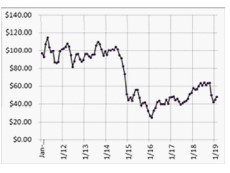Millions of Indians have been living on temporary work permits for decades in countries in the Persian Gulf and the Arabian Peninsula — Saudi Arabia, Oman ,Bahrain, Abu Dhabi, Dubai and others. They keep the economy going, providing cheap labor in the construction and service industries in healthcare, hospitality, retail business, and domestic help.
In the UAE, 27% of the 10.4 million population, or 2.8 million people, are Indians, overwhelmingly from Southern India. In Saudi Arabia’s 31 million population, 13%, or 4 million people, are from India, working temporarily for decades. These workers sweating it out under difficult and dangerous working conditions have been keeping the economy buzzing for decades.
The entire Persian Gulf and the Arabian countries are going through huge economic constriction in recent years, as we see in news stories in the print and visual media all over the word.

The fortunes of this region are tied to the price of crude oil since it accounts for 31% of the 82 million barrels/day of oil produced all over the world. The Middle East region holds 65% of the world oil reserves. The U.S. and Russia are major oil producers, with over 11 million barrels/day, or 14% each of the global oil production. With oil price 50% of where they were only 5 years ago (see the graph), the region is feeling the pinch. Real estate prices are no more good options for speculative investors since the prices are falling or stagnant in many places. Strangely and paradoxically, in Dubai, very rich Indians and Pakistanis are heavily invested in real estate, even as their compatriots sweat it out in poorly paid construction and service industries.
In Saudi Arabia, the generous social services to their citizens are being trimmed. Further, on temporary foreign workers from the Indian subcontinent, the Philippines, Indonesia, etc. the Saudi government has imposed per-capita taxes — that is, taxes for each person including children in the family — making it unattractive for the foreign workers to work there. The idea behind the per-capita taxes is to make it unattractive for foreign workers to bring in their family and thus to reduce the number of foreign workers, and to make the native Saudis fill the vacancies.
The Saudi government is also slowly forcing their native-born citizens to take up the regular 9-5 jobs or even work in shifts in the refineries, now sustained only with cheap labor from South Asia. But the native citizens of these regions are not used to such a grueling work routine under the harsh weather and working conditions.
To reduce the labor costs further, the employers and businesses in these countries have found an even cheaper source of work force — cheaper than what they get from South Asia. People from the Philippines and parts of sub-Saharan Africa are ready to work in the Middle East at ~50% of what the Indians are paid, as revealed in a recent Times of India story. (Source: www.tinyurl.com/Indians-Transition-PersianGulf)
In the years ahead, employers in the Persian Gulf and the Arabian Peninsula will find it economical to hire people from the Philippines and Africa. “They have multi-skills and their language skills are also good.â€
Are the state and federal governments in India studying the impact of this change on the economies in Kerala, Tamil Nadu, and parts of Uttar Pradesh, and how it will affect the social fabric? ♠
